Channel-billed Cuckoo > juvenile ◦
The Channel-billed Cuckoo (Scythrops novaehollandiae) is the largest of the parasitic cuckoo birds in the world, coming in at between 55 cm to 70 cm long and with a wingspan of between 86 cm to 106 cm. It has been found to place its eggs in a range of native birds nest including the Australian Raven, Collared Sparrowhawk, Little Crow, Magpie-lark, Pied Currawong, Torresian Crow and the White-winged Chough.
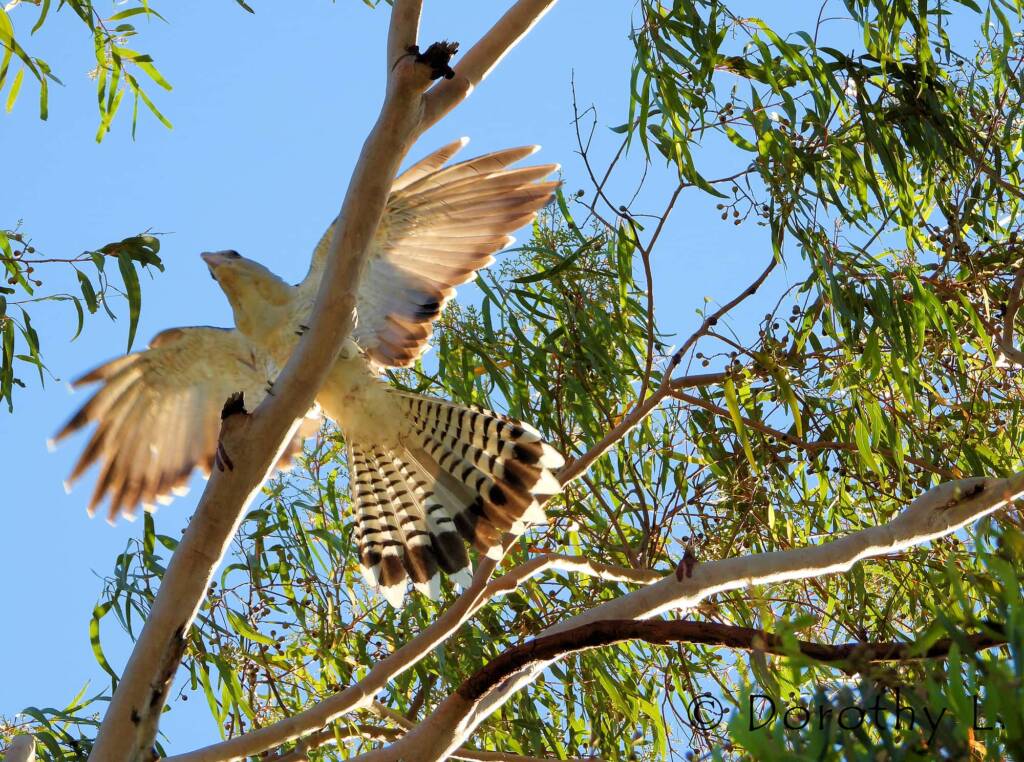
A large cuckoo with red eye-ring and large pale beak. The bird is pale gray and becoming paler and barred lower down. The wings are a darker grey and has dark tips on the feathers. The top of the tail is dark grey and is barred underneath with black bands and white tip at the end. The immature birds have olive to brown eye and smaller bill.
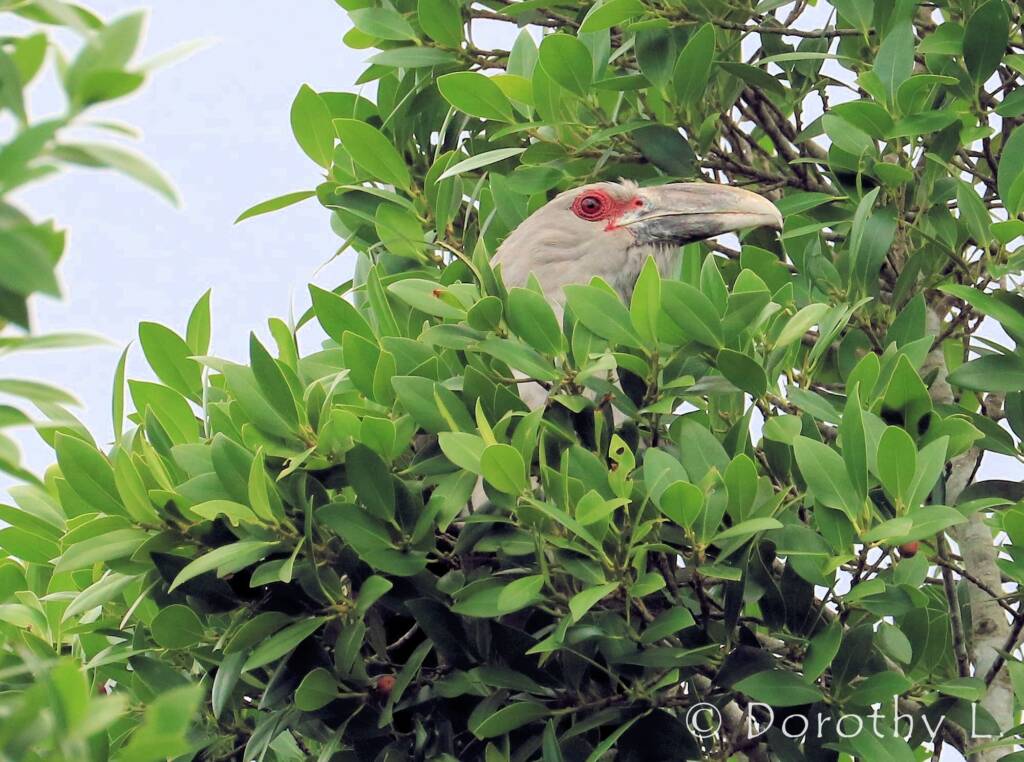
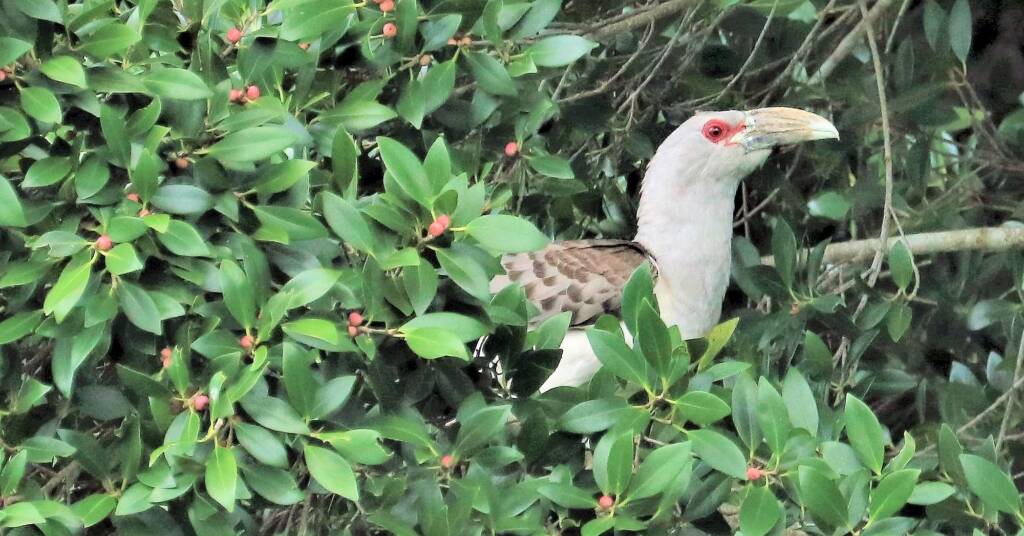
The call of the Channel-billed Cuckoo is raucous and loud, a call that can carry for kilometres. It is a loud “kawk, kawk” sound, followed by softer rapid sound of “awk, awk, awk”. Whilst it is not strictly a nocturnal bird, their calls can be heard at night during the breeding season.
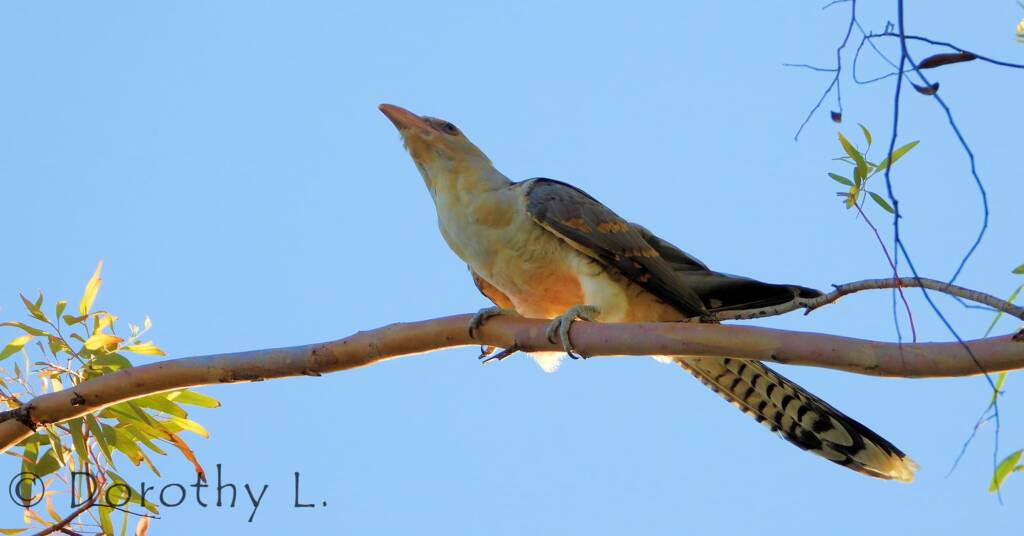
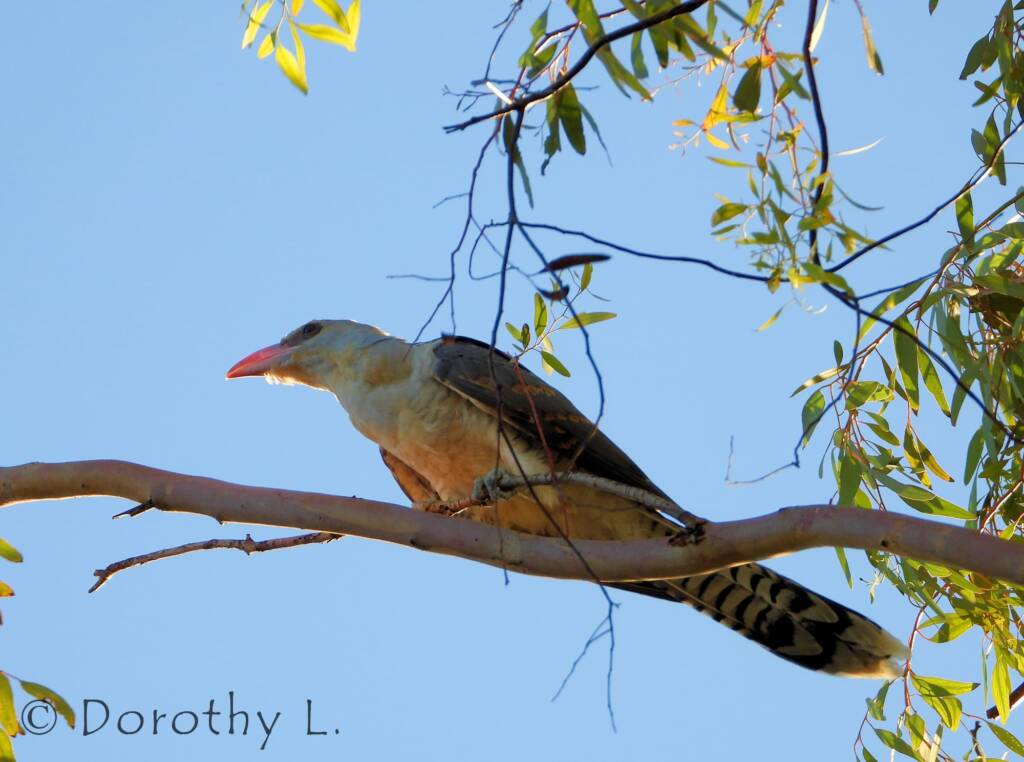
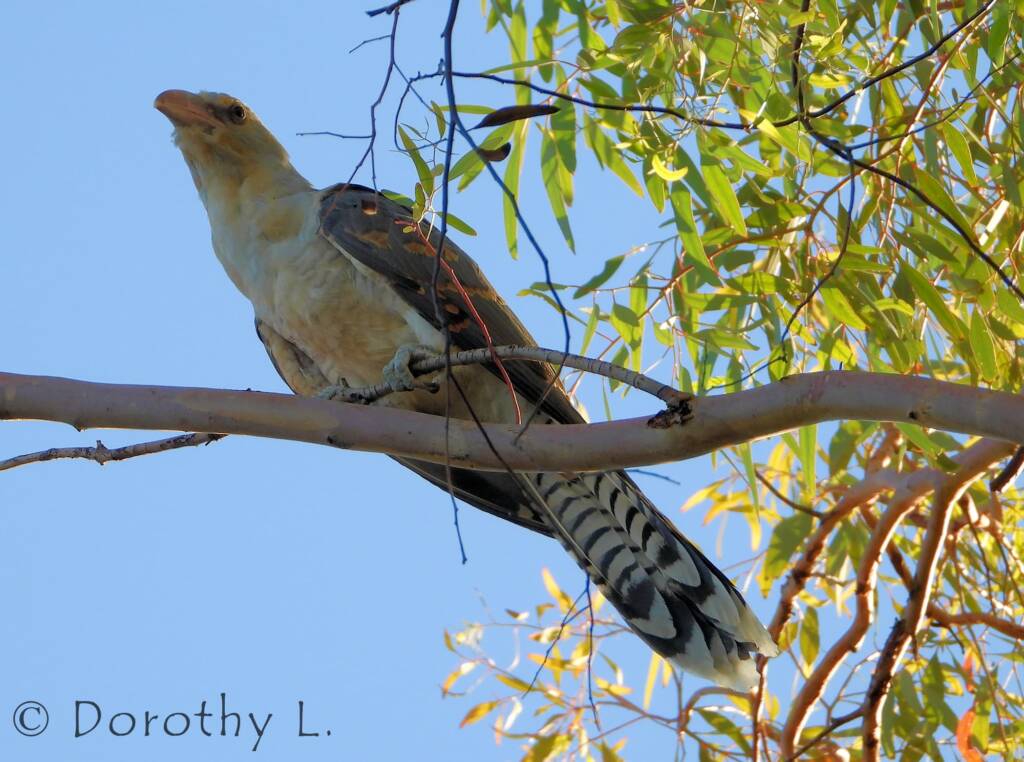
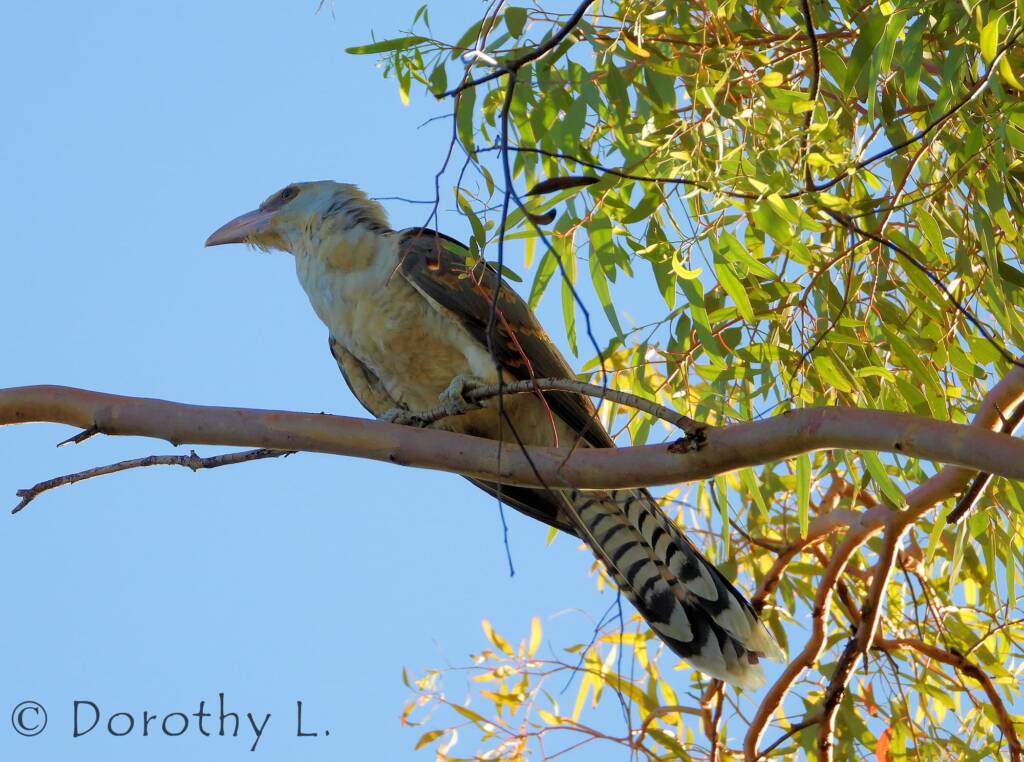
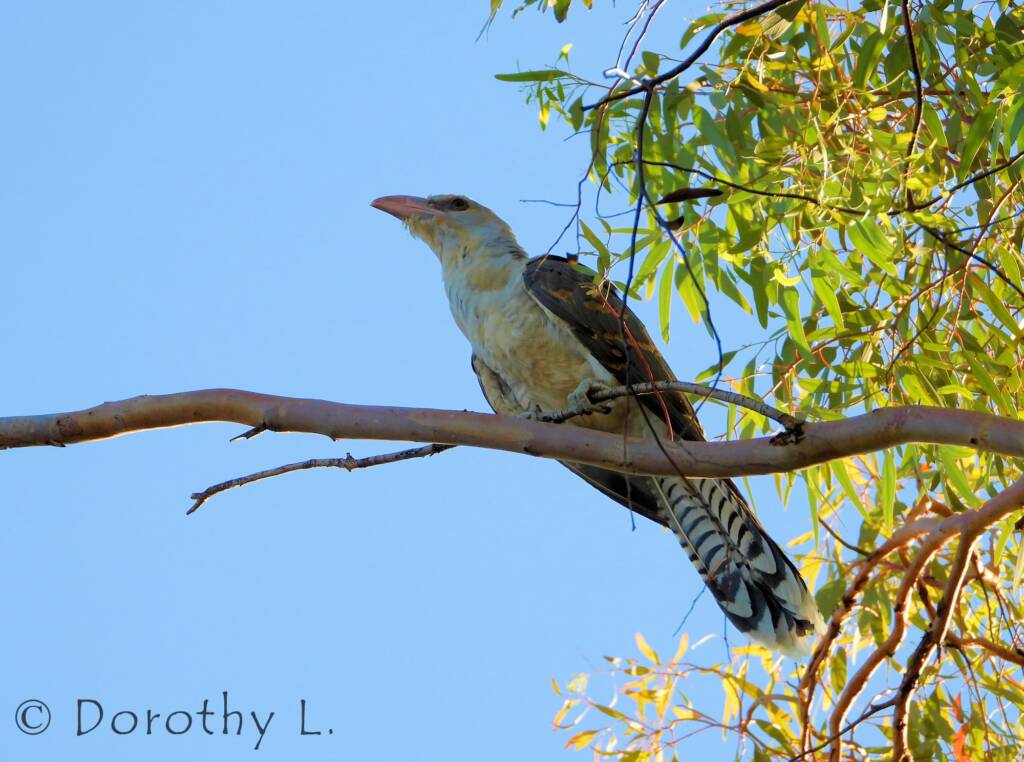
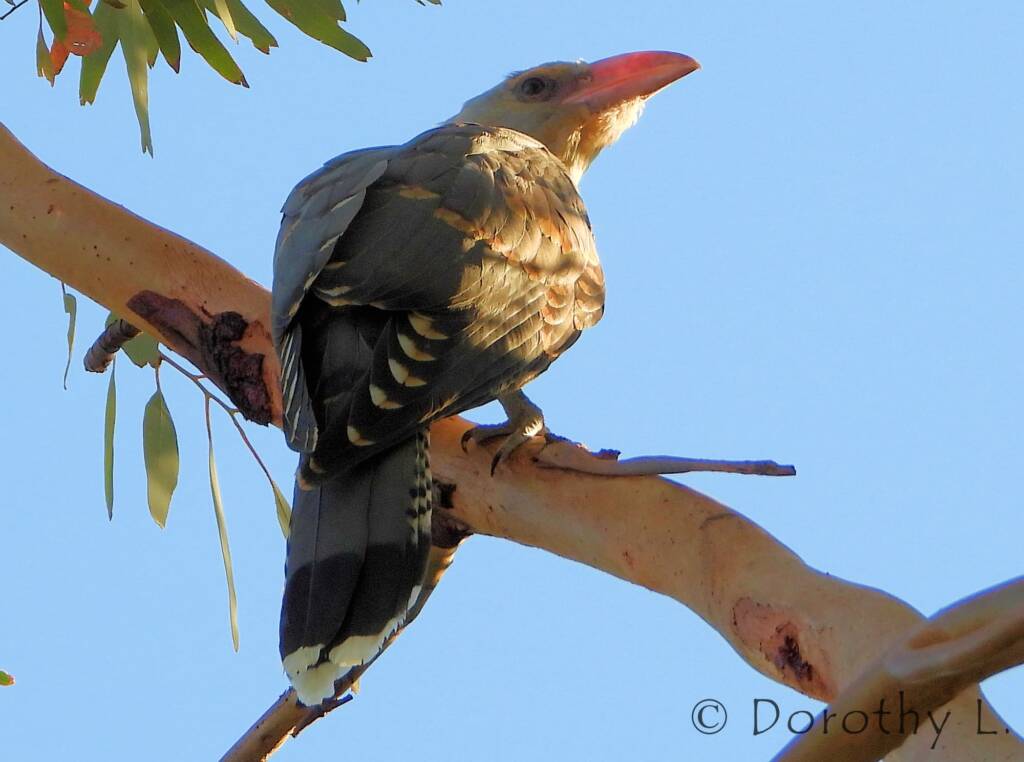
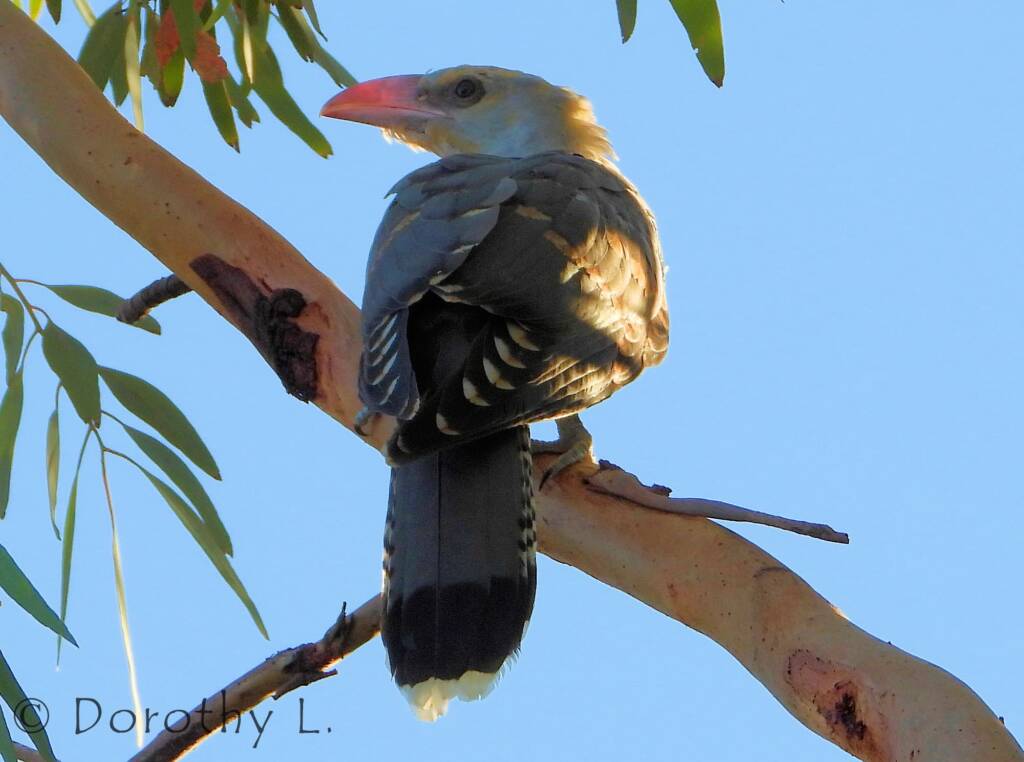
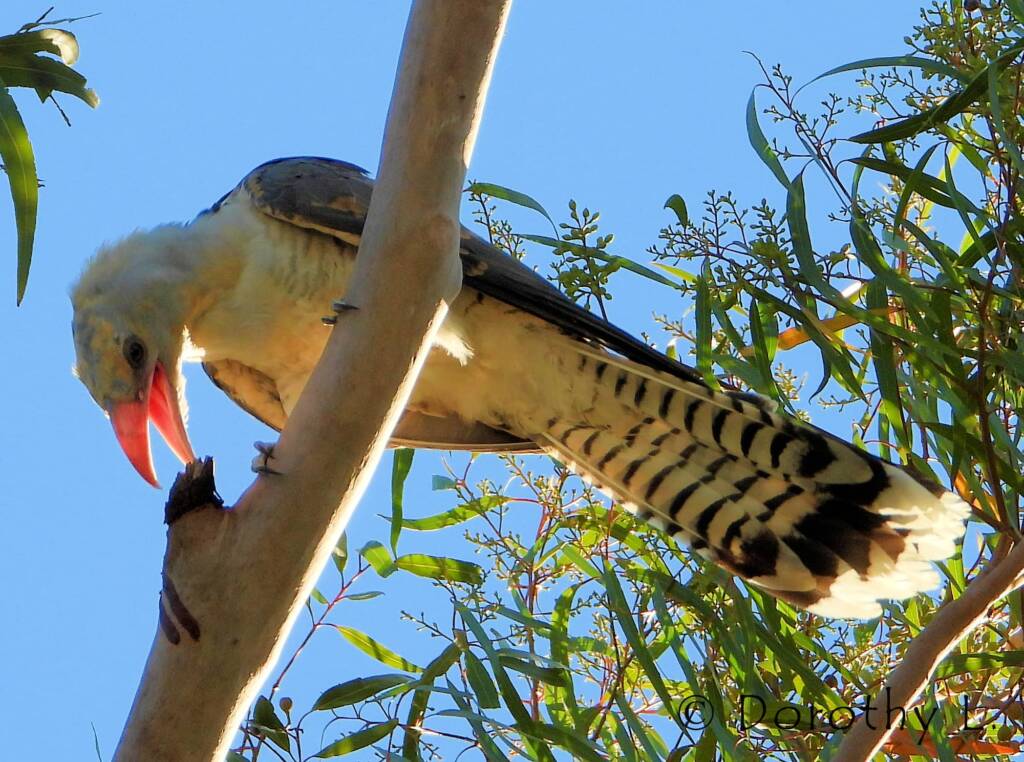
Unlike other cuckoos, the channel-billed cuckoo young do not eject the other host eggs on hatching, nor do they usually kill the host’s chicks. The chicks of the host birds rarely survive as the cuckoo chick grow faster and monopolises the supply of food.
They eat native fruits such as figs, various seeds, insects and even baby birds.
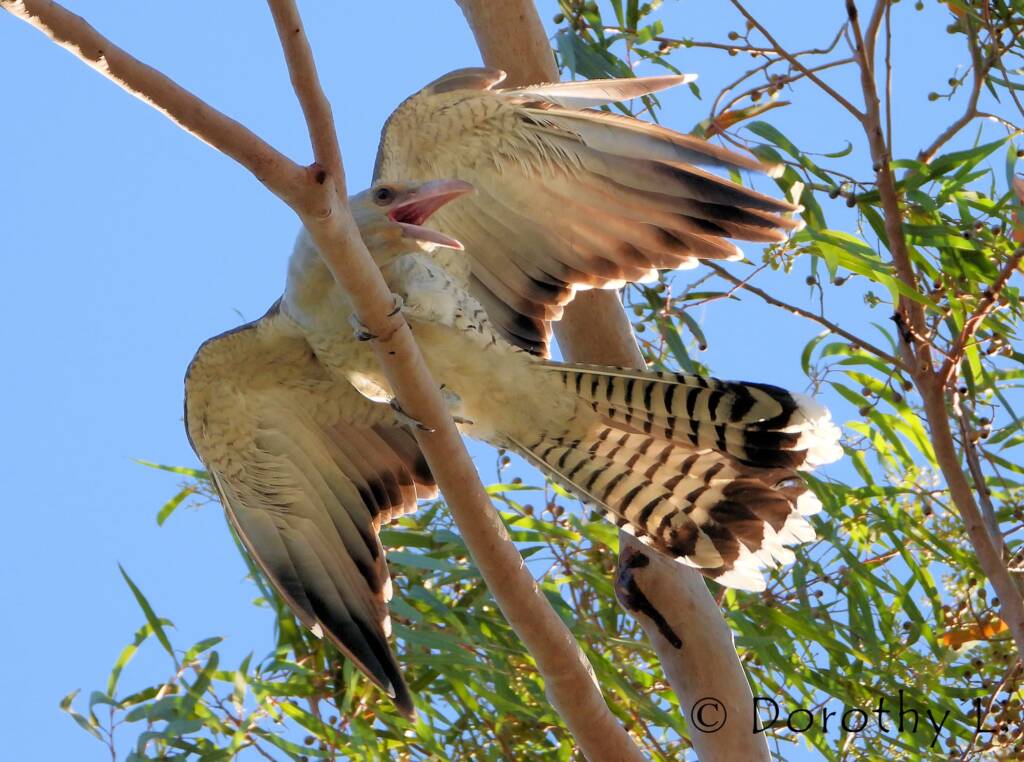
A migratory bird, it spends the middle of the year in eastern Indonesia and New Guinea, before coming to northern and eastern Australia for our Australian summer. They have also been sighted in Alice Springs, Central Australia.
Common name
The Channel-billed Cuckoo have also been known as the Stormbird, Storm-bird.
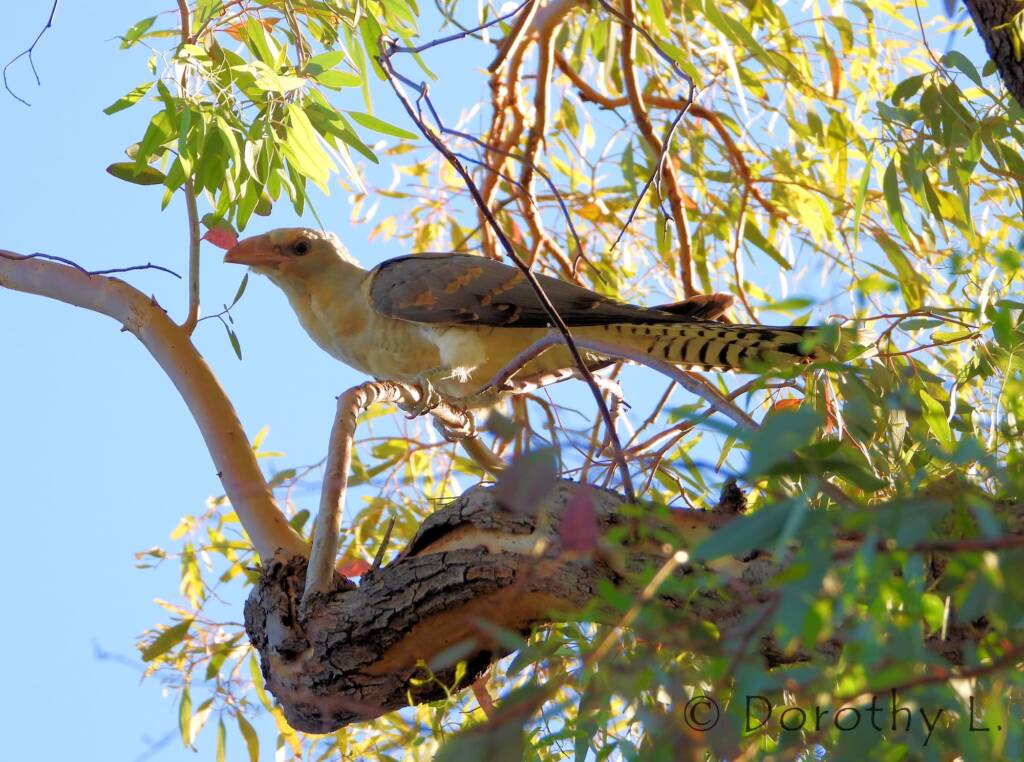

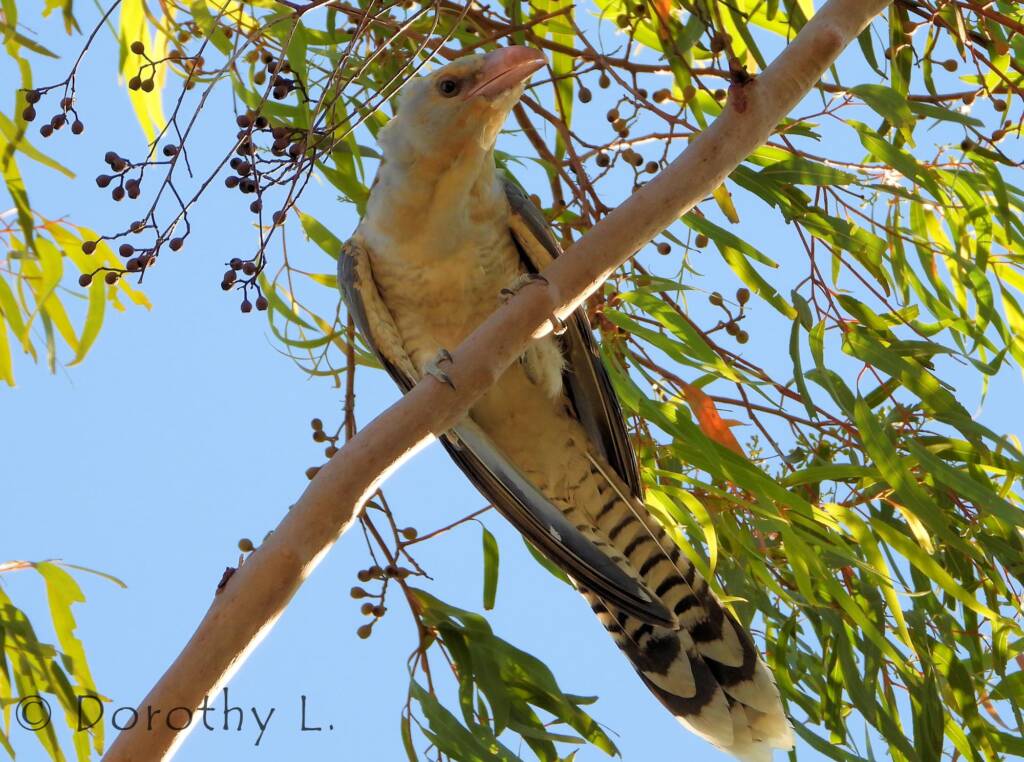
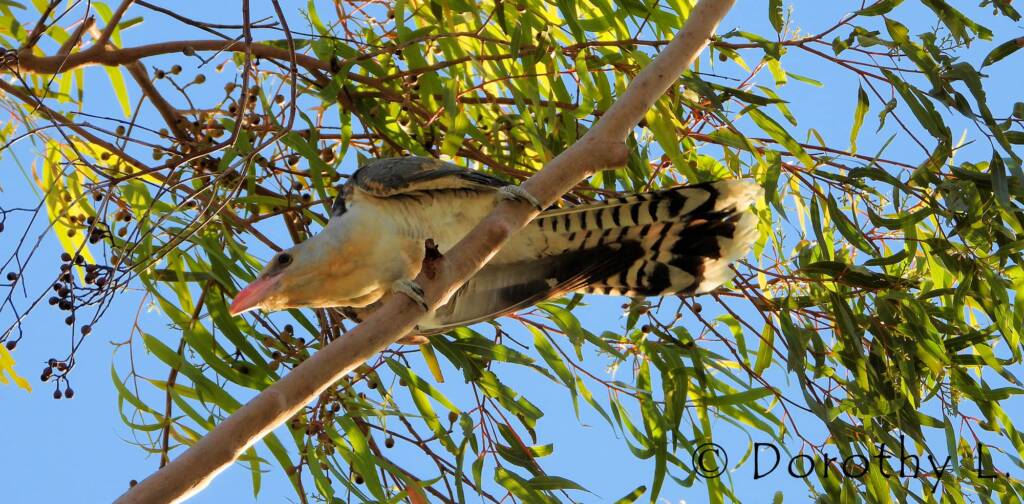
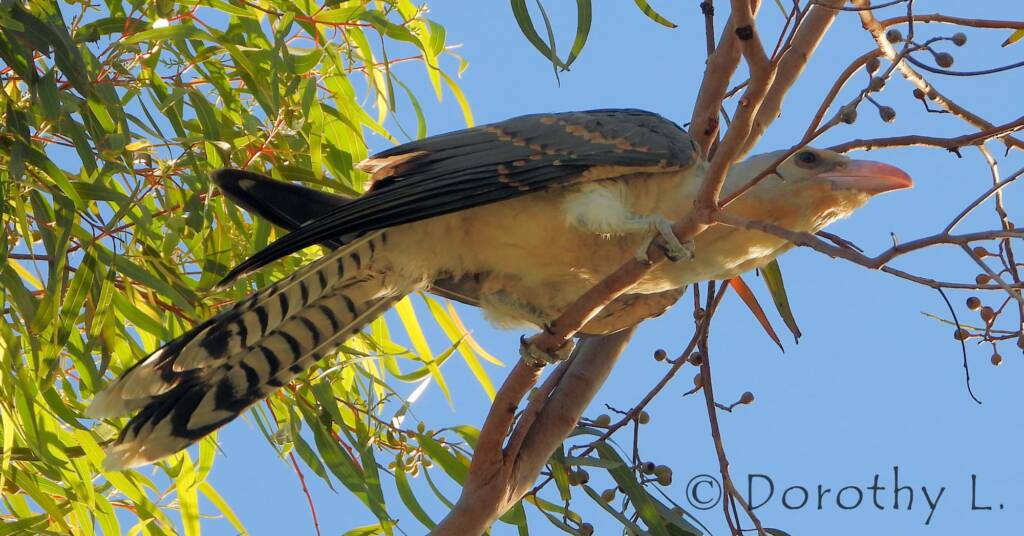
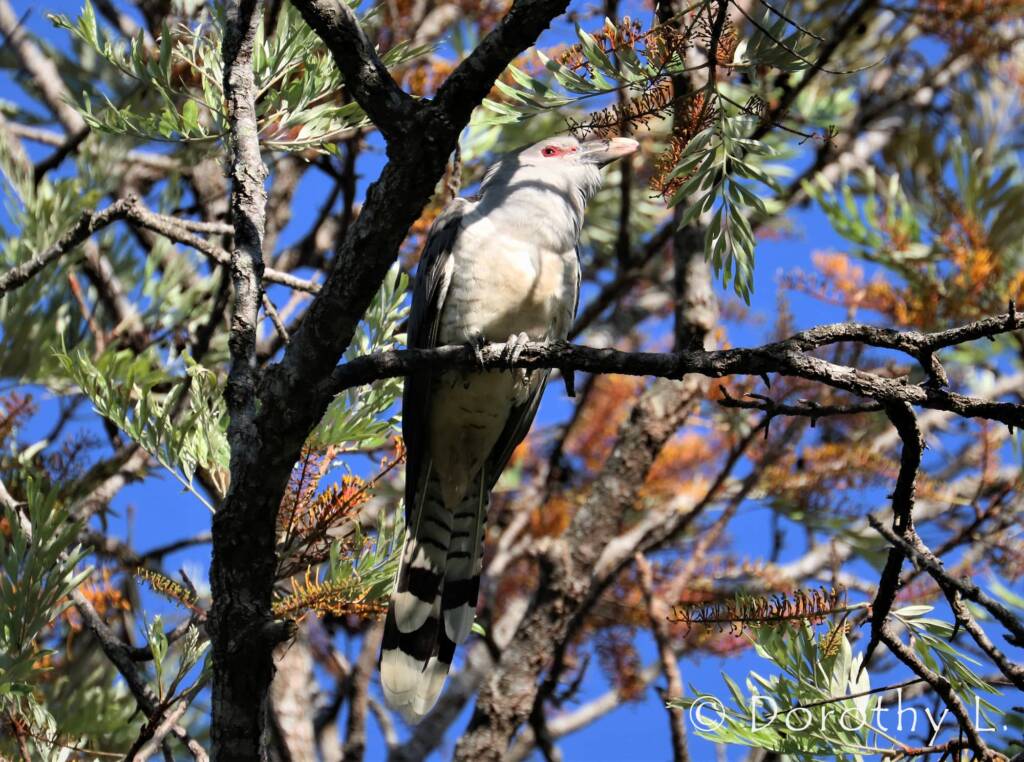
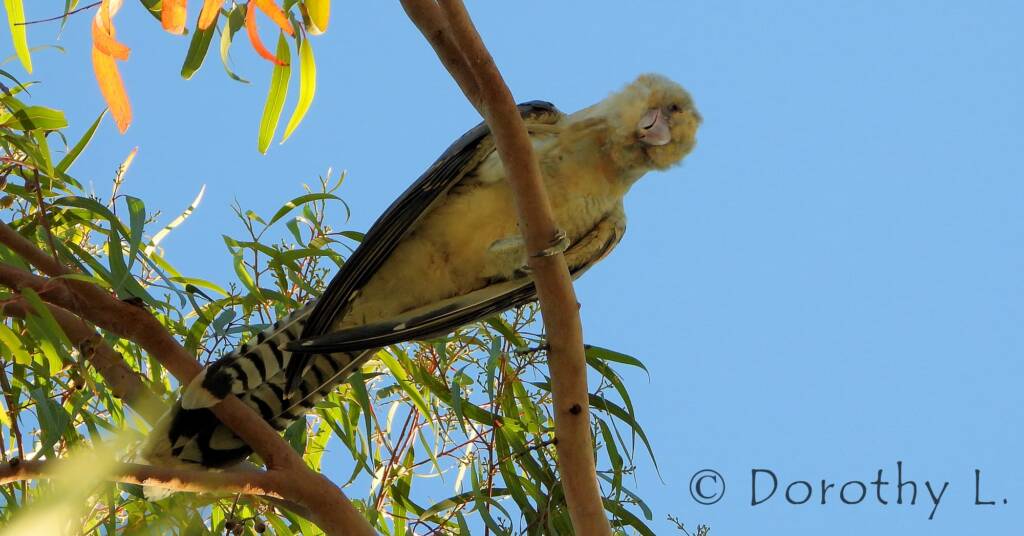
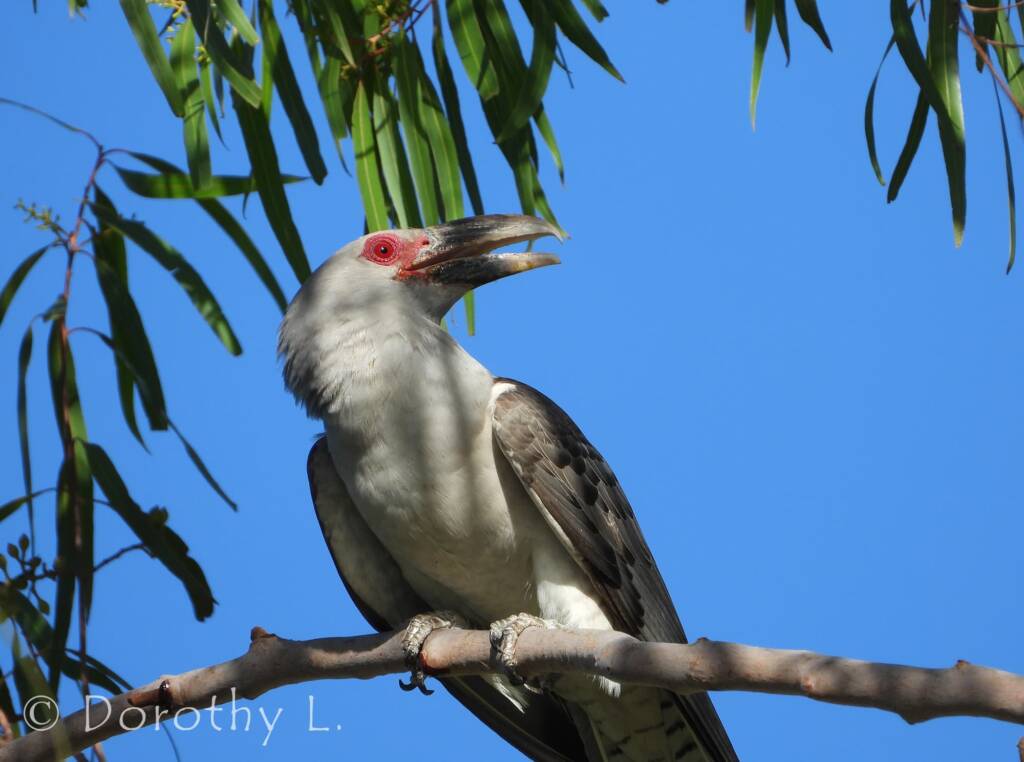
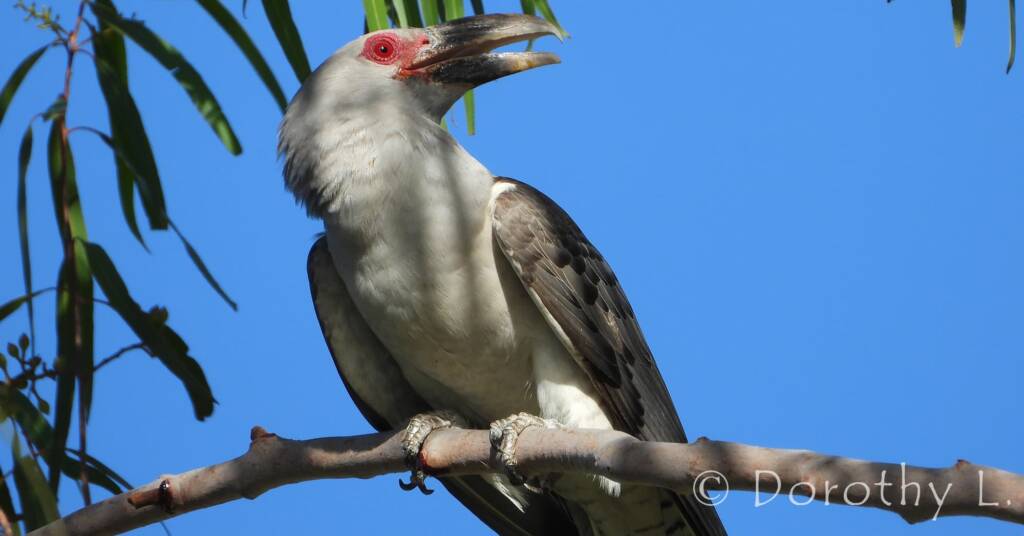
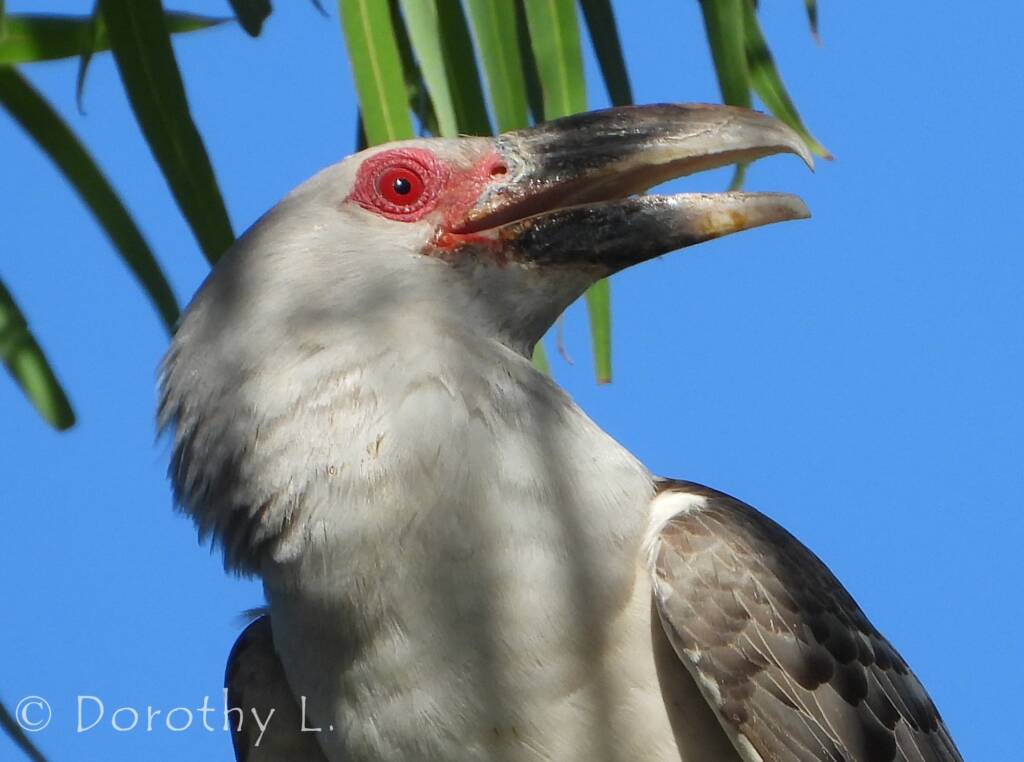
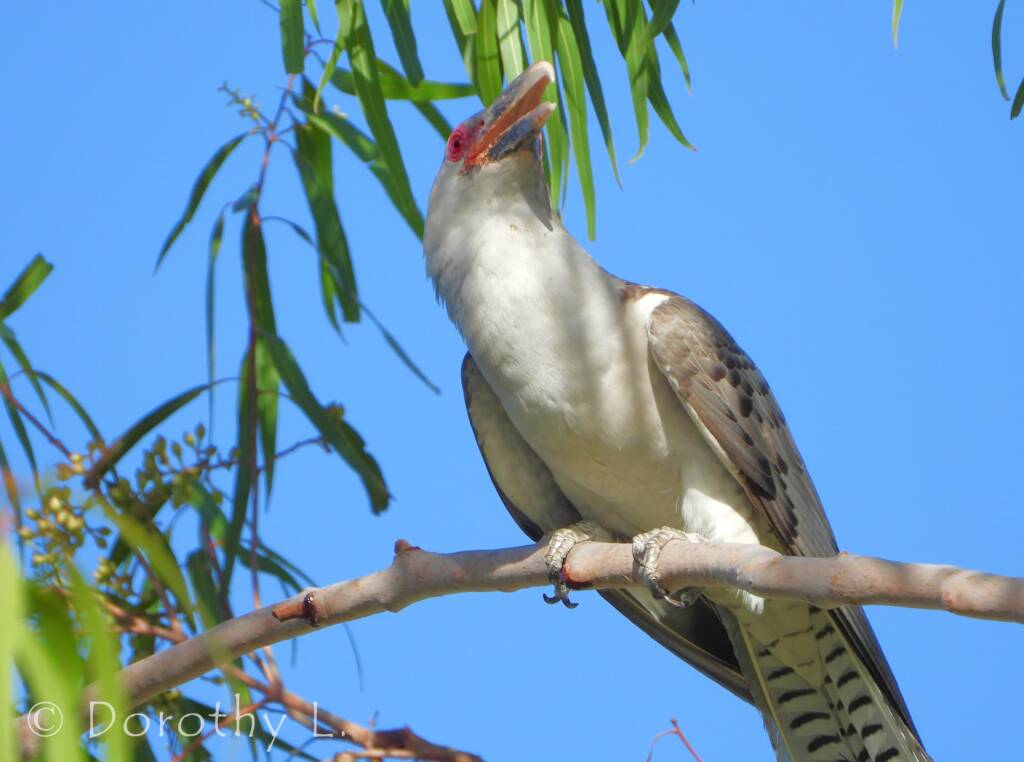
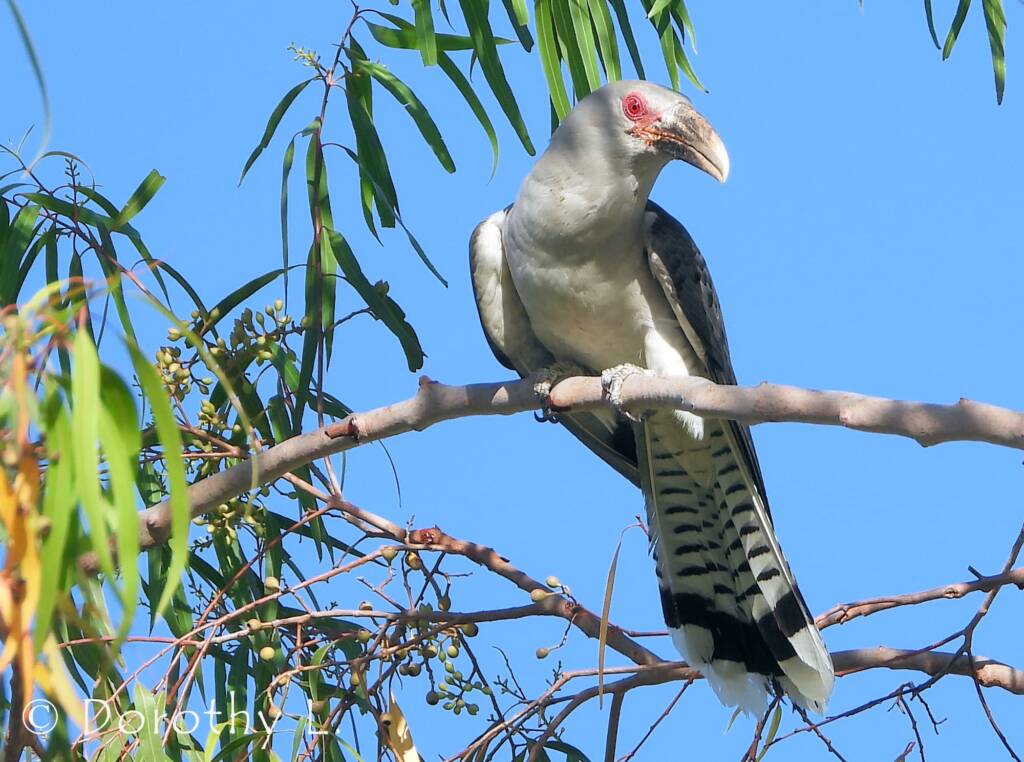
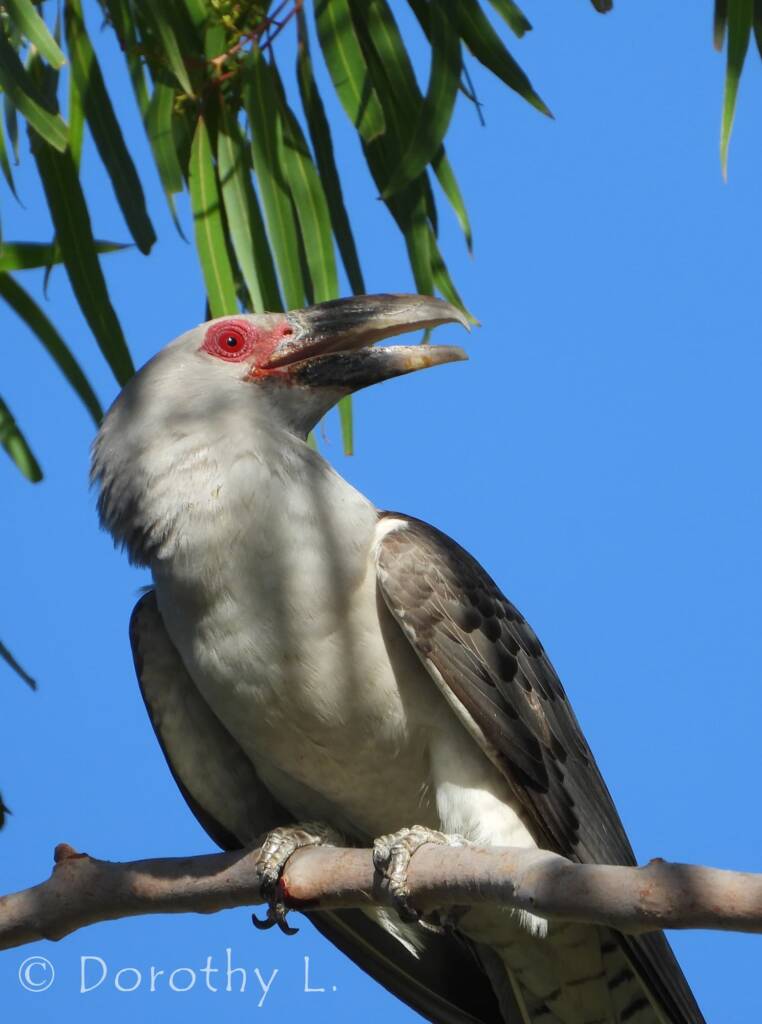
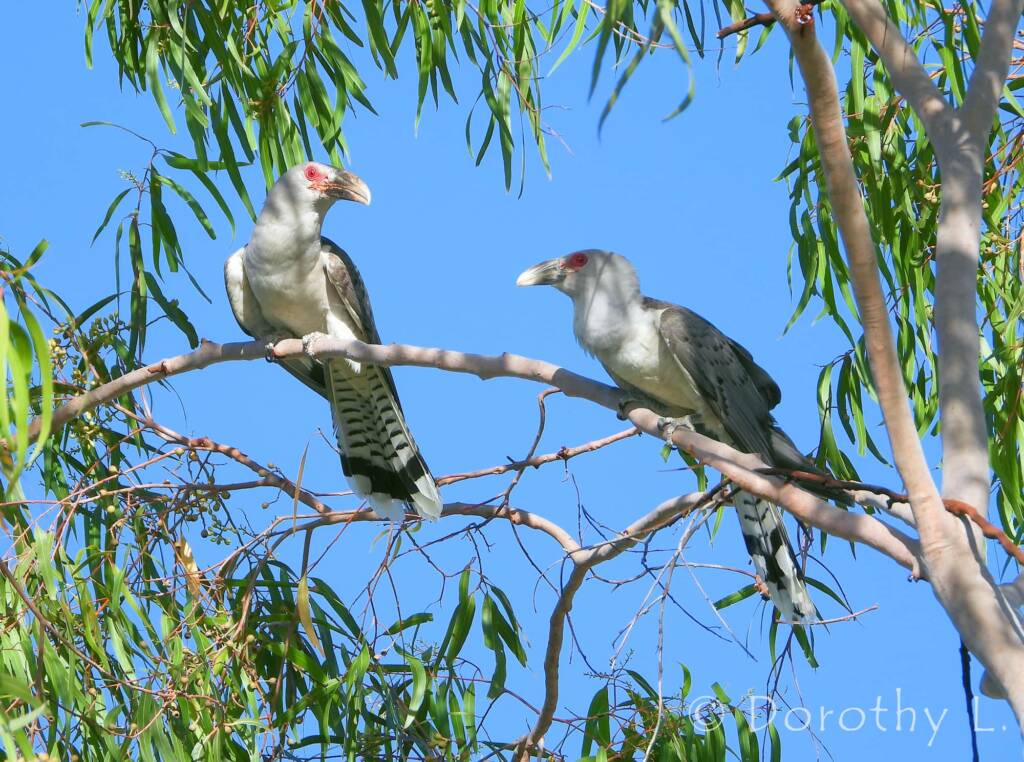
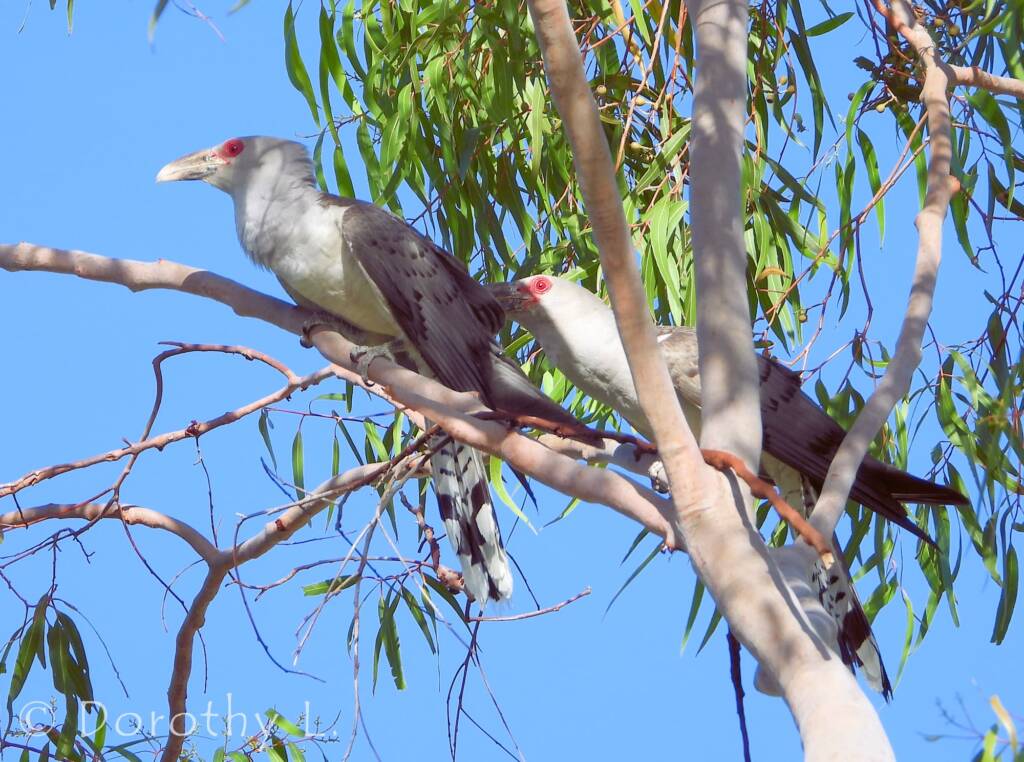
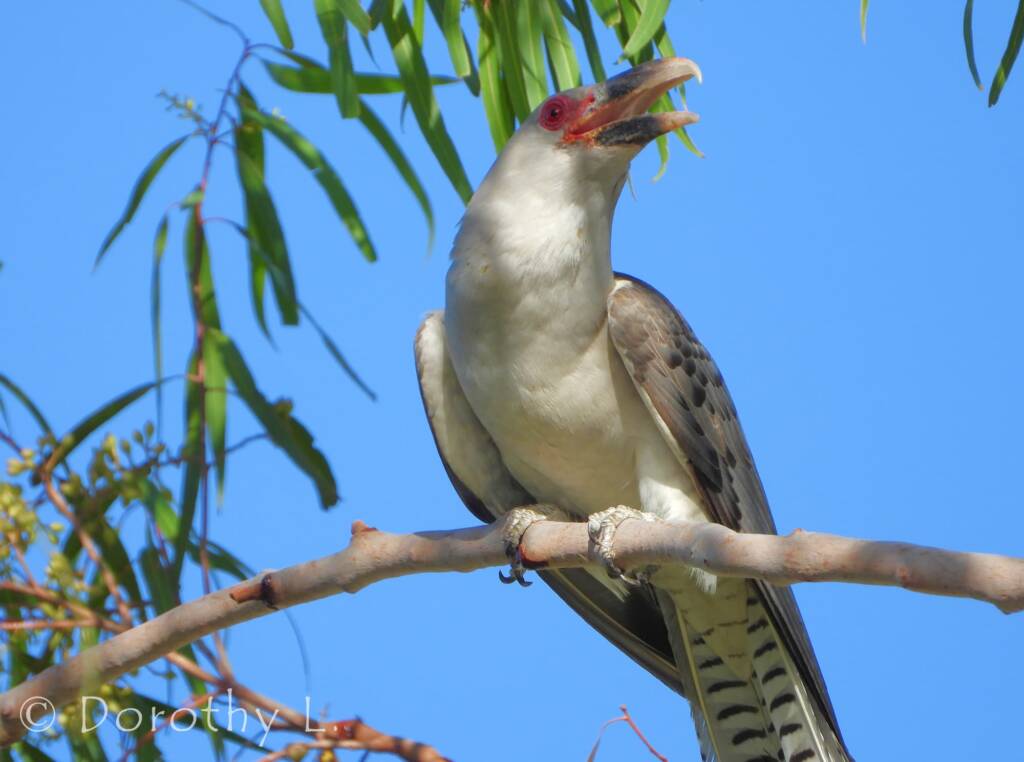
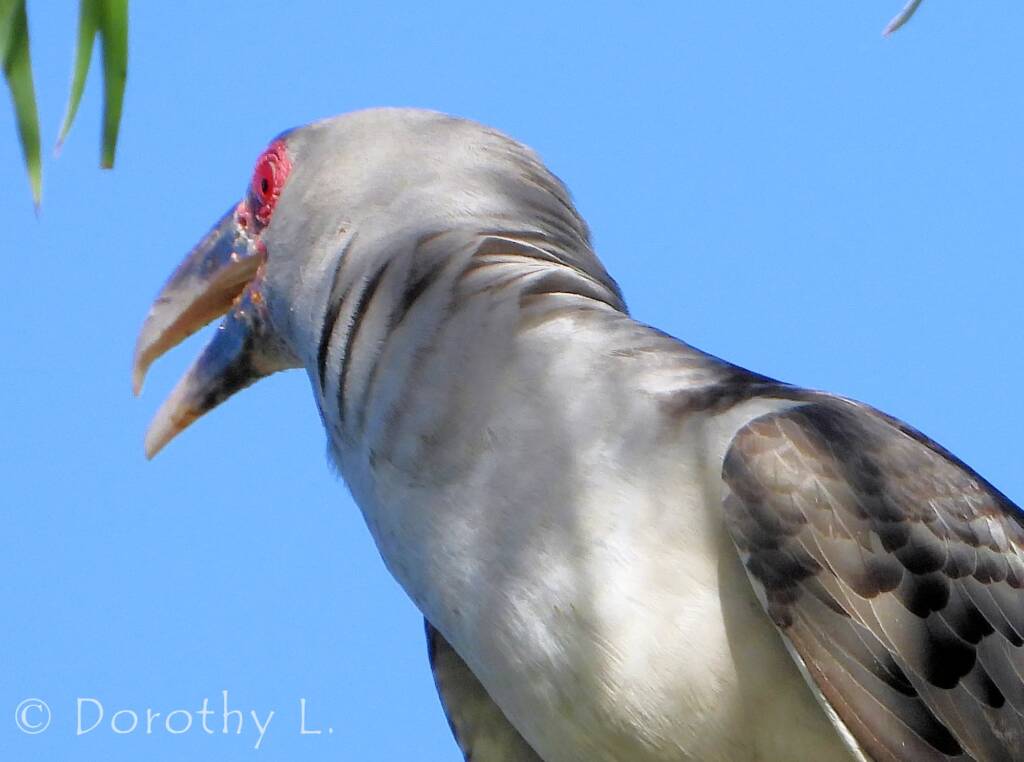
Check out our latest images on the juvenile Channel-billed Cuckoo.
Images © Dorothy L
- Scientific classification
- Kingdom: Animalia
- Phylum: Chordata
- Class: Aves
- Order: Cuculiformes
- Family: Cuculidae
- Genus: Scythrops
- Species: S. novaehollandiae
- Binomial name: Scythrops novaehollandiae
